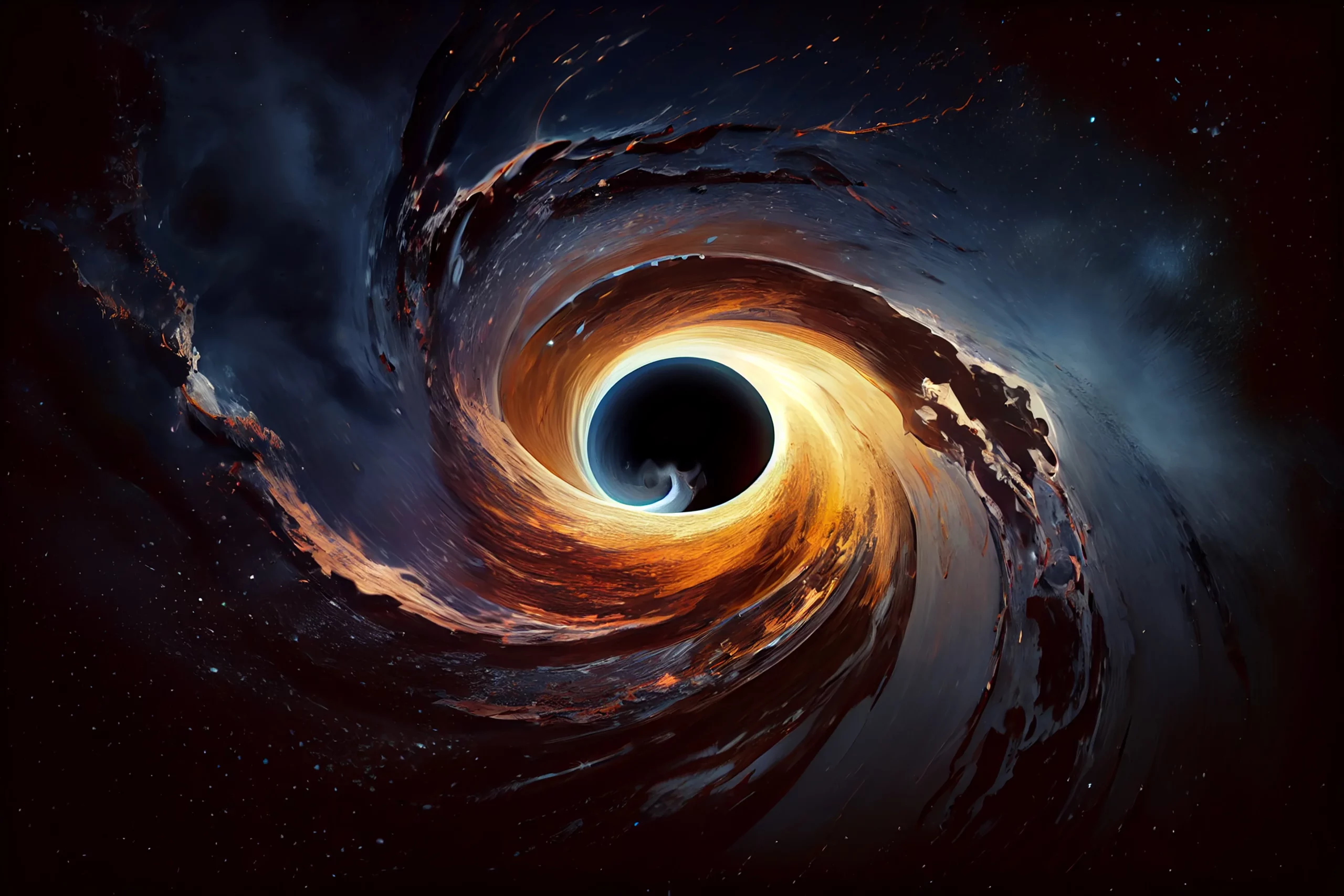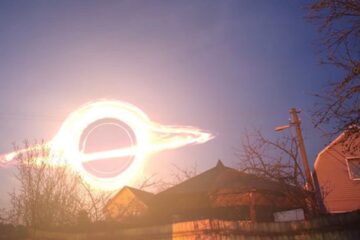The Mysteries of Black Holes: Gateways to the Unknown Universe

Black holes are one of the most enigmatic and captivating phenomena in the universe. These regions of spacetime, where gravity is so intense that nothing, not even light, can escape their grasp, have captured the imagination of scientists and space enthusiasts for decades. In this article, we will delve into the mysteries of black holes, from their formation to their influence on the cosmos, and answer some frequently asked questions about them.
What Is a Black Hole?
To grasp the mysteries of black holes, we must first unravel what they truly are. In simple terms, a black hole is a region of spacetime where gravity is so intense that nothing can escape its pull, not even light. This distinctive characteristic makes them extremely challenging to observe directly, adding an aura of mystery to their existence.
Black holes form from the death of massive stars. When a star exhausts its nuclear fuel, it collapses under its gravity. The final fate of this star depends on its mass. If the star is massive enough, the collapse results in the formation of a black hole.
Sizes and Types of Black Holes
There are different sizes and types of black holes, and this is one of the most intriguing areas of study in astrophysics. The three main types of black holes are:
- Stellar Black Holes: These form from the collapse of massive stars and can have masses ranging from several times that of the Sun to a few tens of times the solar mass.
- Intermediate Black Holes: Their mass lies somewhere between stellar black holes and supermassive ones. Although they are harder to detect, they are believed to exist at the centers of star clusters.
- Supermassive Black Holes: These are the giants of the universe, with masses ranging from millions to billions of times the mass of the Sun. They reside at the centers of most galaxies, including our own, the Milky Way.
How Do Black Holes Form?
The formation of a black hole is a spectacular process that occurs when a massive star reaches the end of its life cycle. Below, we describe the process in three key stages:
Gravitational Collapse
When a massive star exhausts its nuclear fuel, the nuclear fusion that keeps it shining ceases. Gravity begins to win the battle against the forces that keep the star in balance, and the star starts to collapse under its weight.
Supernova
As the star collapses, the intense pressure in its core leads to a cataclysmic explosion known as a supernova. This explosion releases an astonishing amount of energy, often brighter than an entire galaxy for a brief period. The supernova is a crucial event in the formation of a black hole as it expels the outer layers of the star, leaving behind its collapsed core.
Singularity
The collapsed core of the star, what remains after the supernova, becomes the singularity of a black hole. In this region, the density is infinite, and gravity is so intense that spacetime curves extremely, giving rise to a black hole. The singularity is surrounded by a boundary called the event horizon, beyond which nothing can escape.
What Happens Inside a Black Hole?
One of the most intriguing questions about black holes is what happens inside them. Unfortunately, due to the very nature of black holes, it is impossible to directly observe their interior. However, theoretical physicists have developed models to understand what might occur beyond the event horizon.
The Singularity
At the center of a black hole is the singularity, a region of infinite density and extreme spacetime curvature. According to Einstein’s general theory of relativity, this singularity is a kind of endpoint where all matter that falls into the black hole accumulates. However, the singularity is also a place where the laws of physics as we know them may cease to apply.
The Event Horizon
The event horizon is the region where gravity is strong enough to trap even light. This means that once something crosses the event horizon, there is no turning back. Not even information can escape this region, leading to the famous black hole information paradox.
The Black Hole Information Paradox
The black hole information paradox is a fundamental problem in theoretical physics. It raises the question of what happens to the information that falls into a black hole. According to the laws of quantum physics, information should never be lost, but black holes appear to violate this rule.
One of the theories proposed to resolve this paradox is the idea that information is not destroyed in black holes but is stored on the surface of the event horizon in the form of «Hawking radiation.» This radiation is a type of thermal radiation emitted by black holes due to quantum processes and may contain information about the matter that fell into the black hole.
How Do We Detect Black Holes?
Since black holes are practically invisible due to their ability to absorb light and all forms of electromagnetic radiation, scientists have developed ingenious methods to detect their presence. Below, we describe some of the most common techniques used to detect black holes:
Observing Binary Systems
One of the most effective methods for detecting stellar black holes is to observe binary systems in which a black hole and a companion star orbit each other. As the black hole pulls material from its companion, this material forms a hot accretion disk that emits detectable X-rays observed by space telescopes.
Gravitational Waves
In 2015, a revolutionary breakthrough in black hole detection occurred with the observation of gravitational waves. Gravitational waves are ripples in spacetime produced when massive objects, such as merging black holes, accelerate at high speeds. The detection of these waves has opened a new window to the universe and allowed for the detection of black holes that do not emit electromagnetic radiation.
Observation of Fast-Moving Stars
At the centers of many galaxies, including our own, supermassive black holes reside. These gravitational giants can be detected by observing the rapid motion of nearby stars that orbit at incredible speeds around the black hole. This extremely fast movement is strong evidence for the presence of a supermassive black hole at the galactic center.
Black Holes and Their Impact on the Universe
Black holes are not mere cosmic curiosities; they have a significant impact on the surrounding universe. Here are some ways in which black holes influence the cosmos:
Regulators of Galactic Growth
At the centers of most galaxies, including our Milky Way, lie supermassive black holes. These gravitational giants play a crucial role in regulating the growth of galaxies. As matter approaches the black hole, it heats up and emits energy in the form of radiation. This radiation can affect the surrounding clouds of gas and dust, either inhibiting or stimulating the formation of new stars.
Sources of Cosmic Energy
Black holes can also become incredibly powerful sources of cosmic energy. As matter falls into a black hole, it heats up and accelerates to near-light speeds. This extreme friction creates unimaginable temperatures and energies, releasing jets of particles and radiation that can be detected by telescopes and other instruments.
Influence on Spacetime Structure
The intense gravity of black holes not only affects the surrounding matter but also warps spacetime around them. This leads to fascinating phenomena such as gravitational lensing, where the light from distant objects is bent as it passes near a black hole, allowing us to observe objects that would otherwise be invisible.
Frequently Asked Questions (FAQs)
Below, we address some of the most frequently asked questions about black holes:
What happens if I fall into a black hole?
If you were to fall into a black hole, your fate would be inevitable. Once you cross the event horizon, there is no turning back. Gravity becomes increasingly stronger as you approach the singularity at the center of the black hole, and eventually, you would be stretched and crushed in a process known as «spaghettification.» In other words, it would not be a pleasant experience.
Can black holes destroy the universe?
While black holes are powerful, they do not have the ability to destroy the universe on their own. Their influence is limited to their immediate region and their effects on surrounding galaxies and stars. There is no evidence to suggest that a black hole could trigger the destruction of the entire universe.
What happens when two black holes collide?
When two black holes collide, they release a massive amount of energy in the form of gravitational waves. This has been observed and confirmed by gravitational wave detectors on Earth. The resulting merged black holes can either form a larger black hole or be ejected into space at incredible speeds.
Conclusion
Black holes are true cosmic enigmas that challenge our understanding of the universe. From their formation in the depths of space to their influence on the evolution of galaxies, black holes remain a fascinating and ever-evolving field of study in astronomy and physics. As scientists continue to unveil the secrets of these gateways to the unknown universe, we are getting closer to understanding their role in the vast cosmos in which we live.
Reference: Black Holes by NASA


